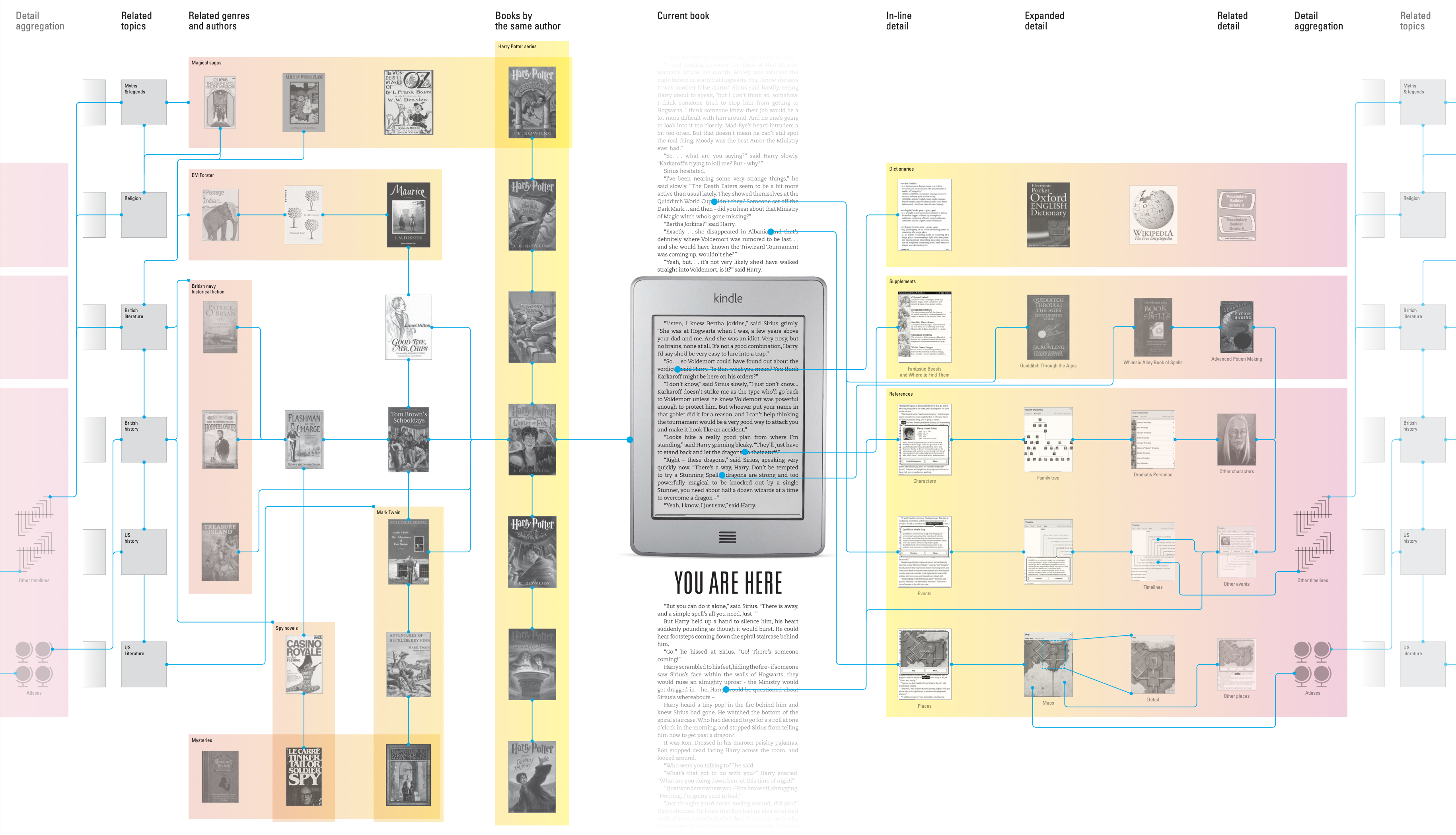
Today’s e-books are electronic versions of their paper forebears. As reader software becomes more sophisticated and human readers and authors become more comfortable with e-book technology, e-books will become more interactive.
Interactive E-book Platform
Dubberly Design Office created an interactive e-book version of the Harry Potter series. The interactive prototype showed how readers might access supplemental information that could be built into the e-book or linked to in related books.
The Harry Potter example illustrates not just one interactive e-book but also a platform that could support many similar books. Interactive e-book platforms will emerge. Platform battles are won by attracting developers, which means building scale, which means opening up a lead early.
This prototype suggests how readers might access supplemental information in a book through different frames: characters, events, and locations. A model below provides an overview of the interaction.
Download the Interactive E-book Platform PDF (3.2 MB)
Explore Related Content
Readers often want to know about other books related to ones they are reading or own. Providing this information creates a sales opportunity. It is related to (but also different from) the “Customers Who Bought This Item Also Bought” (CWBTIAB) collaborative-filtering feature of the Amazon store.
Most books are associated with metadata that could link them to other books, for example:
- Title: other books in the same series
- Author: other books written by the same person
- Publisher: other books in the same family
- Subject: other books on the same topic or in the same genre
- Cover illustrator or book designer: other books in which the same person was involved
(e.g., covers by Chip Kidd or typography by Bradbury Thompson) - Other versions: earlier or later editions, translations into other media
(e.g., the film version or the audio version) - Awards: other books that won a similar award
- Lists: other books in the same list
(e.g., Justice Breyer: The 10 books that shaped my intellectual development, Oprah recommends…. or Aunt Sally’s favorite cook books) - In the case of fiction, non-fiction books about the period or subject
- In the case of non-fiction, novels, stories, or movies touching on the subject
Both of these projects pushed beyond the small, near-term concerns of page rendering and encouraged larger, long-term conversations about reframing what an e-book could be.
Kindle Reader as:
- Map of information and your paths through it
Show me where I’ve been and where else I can go - Library + wish list – erasing the boundary
Help me collect stuff I’m interested in - Ecosystem – your media on any device
Give me access to the cloud from anywhere - Journal – notes on what you’ve learned
Help me build on what I read - Social tool – share with others
Connect me to people with similar interests and to experts - Context-aware – a window on the internet of things
Tell me about what’s here, its history, or how to use it - Platform for a new type of book
Text + image + game + service
Download the Related Content PDF (2.3 MB)
Download the Map of Information PDF poster (1.8 MB)